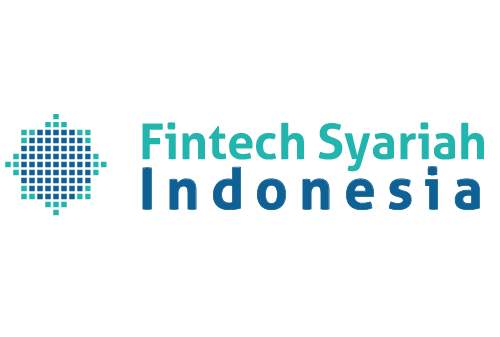Kebijakan Utang dan Investasi Terhadap Pembangunan Ekonomi Islam
Abstract
The purpose of this study is to examine debt and investment policies towards Islamic economic development. In this study, the author used a descriptive research method which explains in sequence debt and investment policies in Islamic economic development. Meanwhile, to analyze data using content analysis, which is a method used to make conclusions from a text. The results of this study show that debt can be a support for economic development. But the debt is the last alternative used.References
Alamsyah, M. H., Ramadhani, F., & Azizah, N. (2020). Tinjauan Hutang Negara dalam Perspektif Islam. Journal of Islamic Economics and Finance Studies, 1(1), 62-81.
Andriyana, D. (2020). Konsep Utang Dalam Syariat Islam. Jurnal Al-fatih Global Mulia, 2(2), 49-64.
Ditjen Pengelolaan Pembiayaan dan Risiko Kementerian Keuangan, Selasa (27/6/2017).
DJPPR. (2017). Pahami Utang : DJPPR Kemenkeu. Retrieved Mei 3, 2021, from Kemenkeu.go.id: https://www.djppr.kemenkeu.go.id/pahamiutang/
DJPPR. (n.d.). Menjawab hutang.
Habin Nazir, Ensiklopedi Ekonomi dan Perbankan Syariah, Bandung: Kaki Langit, hlm. 574
Huda, Nurul. 2016. Keuangan Publik Islami, pendekatan teoritis dan sejarah. Jakarta: Kencana.
Iska, S. (2012). Sistem Perbankan Sayriah di Indonesia dama Persperspektik Fikih Ekonomi. Yogyakarta: Fajar Media Press. slam, JAKIM, 22, 1-23.
Junaedi, D. (2018). Hubungan antara utang luar negeri dengan perekonomian dan kemiskinan: komparasi antarezim pemerintahan. Simposium nasional keuangan negara, 563-587.
Kompilasi Hukum Ekonomi Syariah pasal 30 ayat (36).
Muhajirin, M. (2017). Konsep Hutang Negara Dalam Perspektif Hukum Ekonomi Islam (Studi Analisis Antara Konsep Anggaran Balance Budget dengan Defisit Budget). Al-Mashlahah Jurnal Hukum Islam dan Pranata Sosial, 3(06).
Pardiansyah, E. (2017). Investasi dalam Perspektif Ekonomi Islam: Investasi dalam Perspektif Ekonomi Islam:. Economica: Jurnal Ekonomi Islam, 337-373.
Purnamasari, F. (2017). Pertumbuhan ekonomi: investasi pemerintah dan manajemen investasi dalam perspektif islam (studi di kabupaten/kota provinsi lampung). Jurnal manajemen indonesia, 17;(1), 13-26.
Putera, A. D. (2018, 10 23). Dipakai untuk Apa Utang Selama 4 Tahun Pemerintahan Jokowi-JK? Retrieved 06 27, 2021, from kompas.com: https://ekonomi.kompas.com/read/2018/10/23/165216426/dipakai-untuk-apa-utang-selama-4-tahun-pemerintahan-jokowi-jk
Rusydi, B. U. (2014). Analisis dampak utang luar negeri terhadap kinerja fiskal pemerintah. EcceS: Economics, Social, and Development Studies, 41-57.
Satya, V. E. (2015). Manajemen hutang Pemerintah Dan Permasalahannya State Debt Management Analysis : Kajian Vol. 20 No. 1 Maret 2015 Hal. 59 - 74, 59– 74.
Subagiyo, R., & Budiman, A. (2020). Analisis Komparatif Indikator Penerapan Utang Luar Negeri Indonesia Ditinjau dari Perspektif Ekonomi Islam. Al-Intaj: Jurnal Ekonomi dan Perbankan Syariah, 6(1), 82-93.
Supatmoko. (2013). Keuangan Negara Dalam Teori Dan Praktik (keenam). BPFE
Syahnaz, S. (2009). Konsep pinjaman menurut perspektif Islam. Jurnal Penyelidikan
Tim Kajian Bapennas. (2015). ANALISIS KEBIJAKAN PEMANFAATAN PINJAMAN LUAR NEGERI PEMERINTAH. Jakarta: Bapennas RI.
Yusuf as-sabatin, Bisnis islam dan kritik atas praktik bisnis ala kapitalis, (Bogor: Al Azhar Press, 2014), hal. 36.
Downloads
Published
How to Cite
Issue
Section
License
Authors who publish with this journal agree to the following terms:
- Authors retain copyright and grant the journal right of first publication with the work simultaneously licensed under a Creative Commons Attribution 4.0 International License that allows others to share the work with an acknowledgment of the work's authorship and initial publication in this journal.
- Authors can enter into separate, additional contractual arrangements for the non-exclusive distribution of the journal's published version of the work (e.g., post it to an institutional repository or publish it in a book), with an acknowledgment of its initial publication in this journal.
- Authors are permitted and encouraged to post their work online (e.g., in institutional repositories or on their website) before and during the submission process, as it can lead to productive exchanges, as well as earlier and greater citation of published work.

This work is licensed under a Creative Commons Attribution 4.0 International License.











